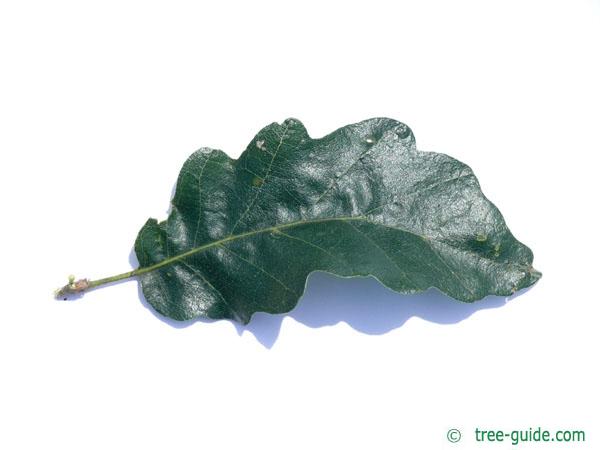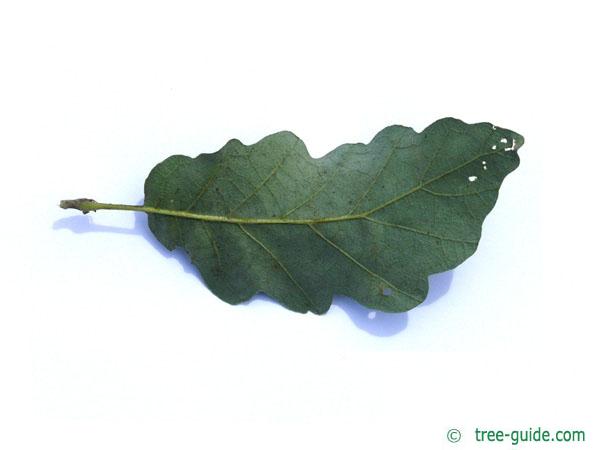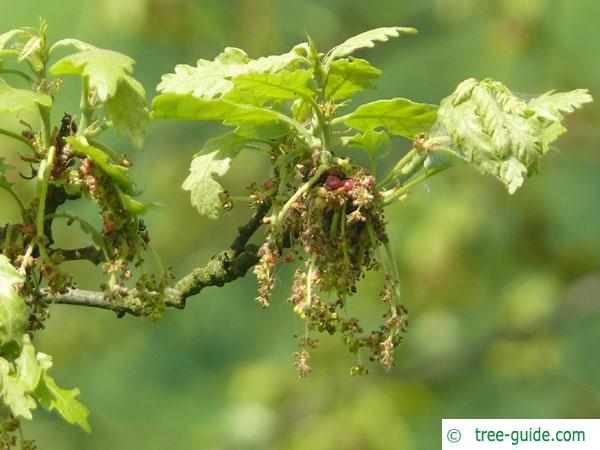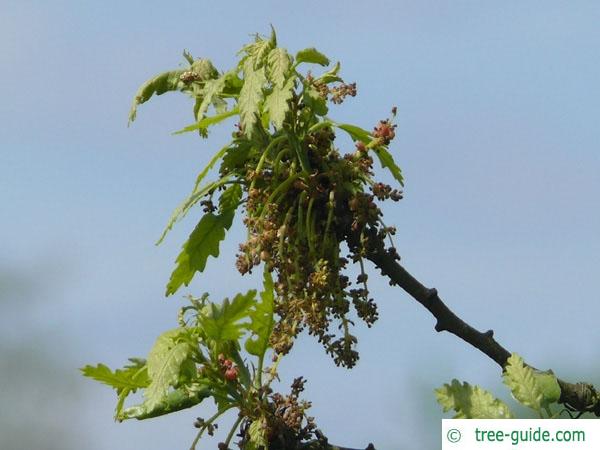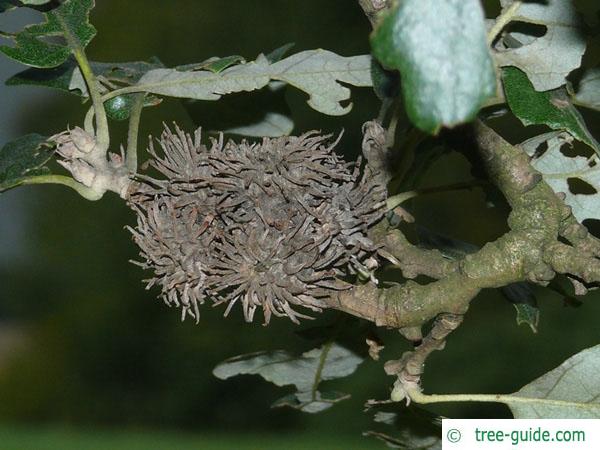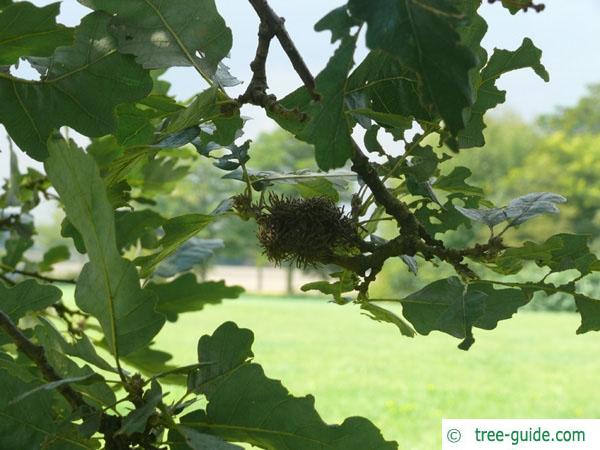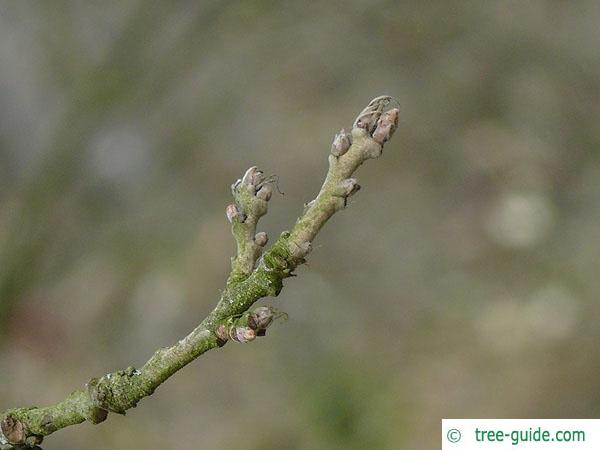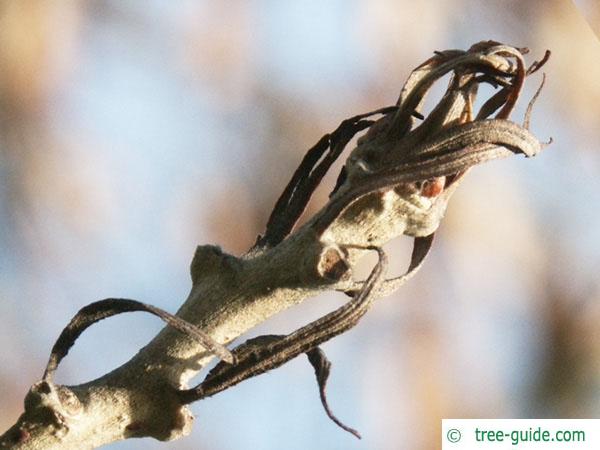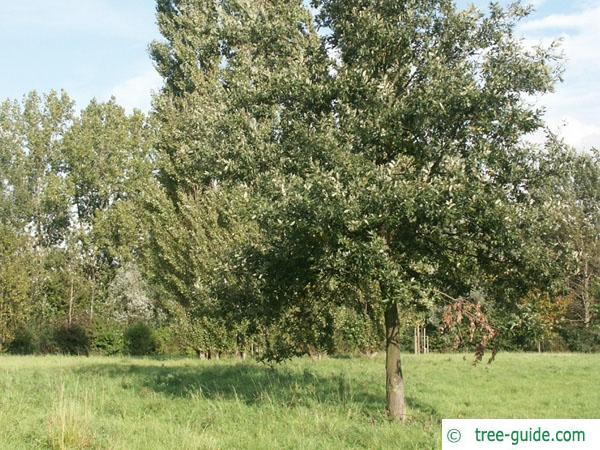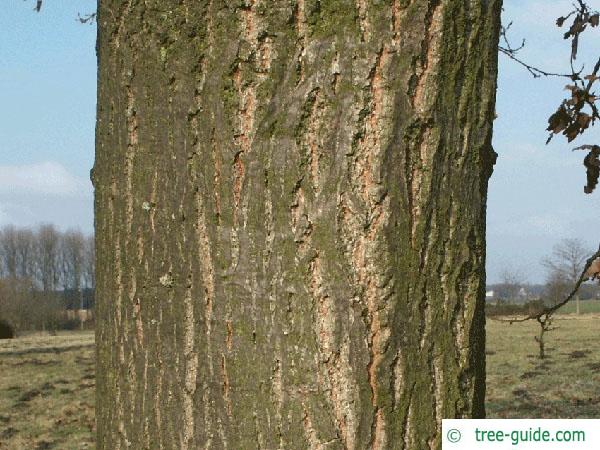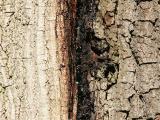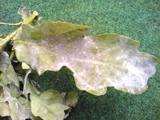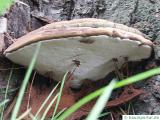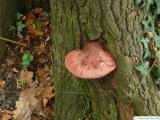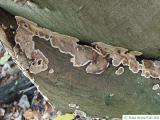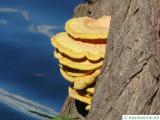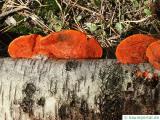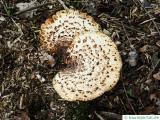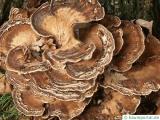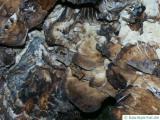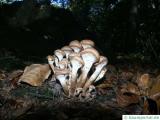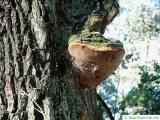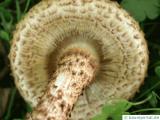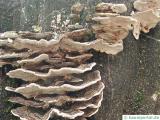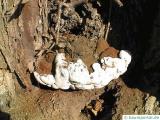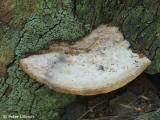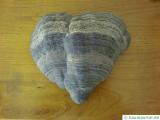Basisdaten
The Turkey Oak is originally from the area South East Europe / Asia. In southern Europe, Turkey oak is a forest grove. In Northern Europe they are found as an ornamental tree, especially in parks.
Tree profile
The leaves of Turkey Oak are dark green, slightly sinuate and up to 12 cm (4.7 in) long and up to 5 cm (2 in) broad. The leaf margin is smooth.
The flowers form about 10 cm (3.9 in) long reddish-green catkins, which sprout with leaves.
The acorns are brown and oval.
The young shoots are gray and tomentose. The branches have raised leaf scars. The buds are small and reddish brown. Note the dried up leaves in winter they stand bushy.
single tree, planting in groups, parks and roadside green
Oaks additional information
overview leaves | overview blossoms
overview fruit | overview trunks
overview winter | overview trees







